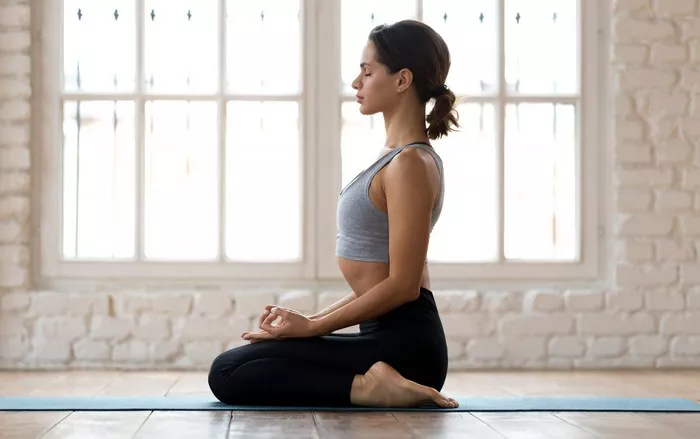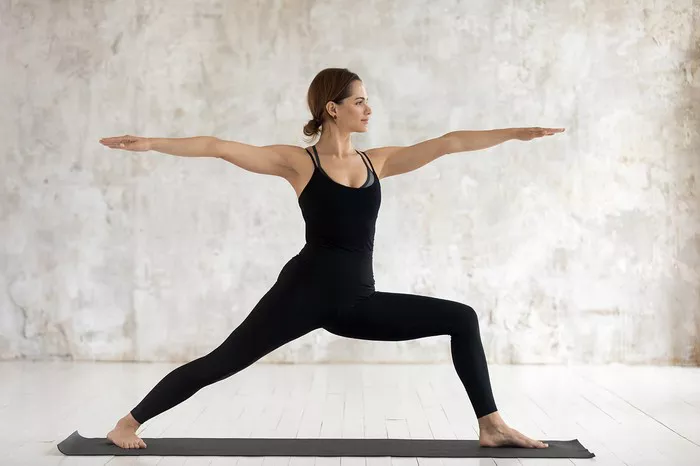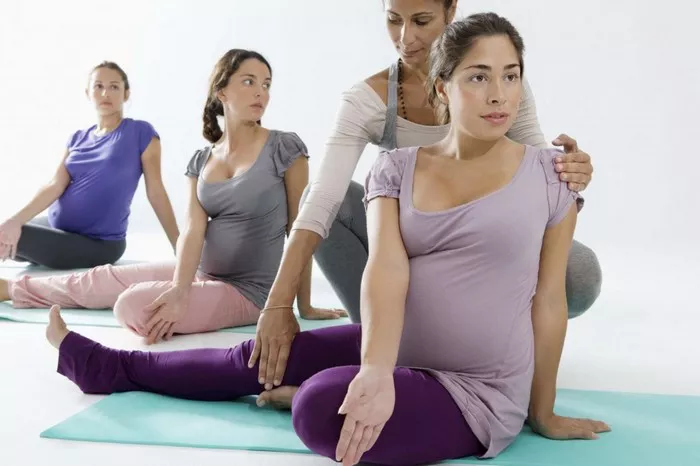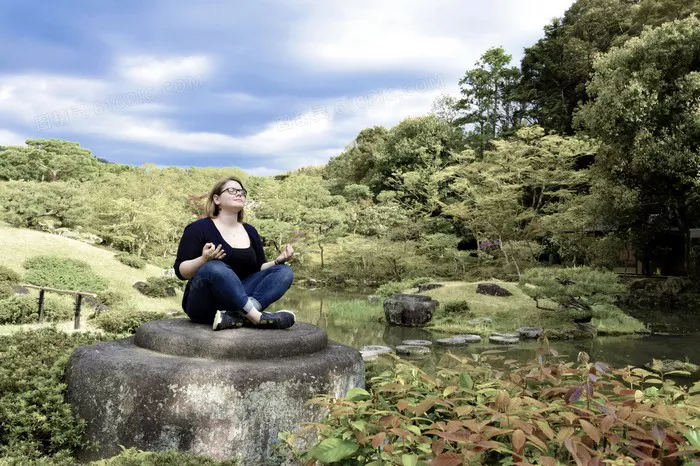Yoga has been practiced for thousands of years as a means to achieve physical, mental, and spiritual well-being. One of the most authoritative ancient texts on Hatha Yoga is the Hatha Yoga Pradipika, written by Swami Svatmarama in the 15th century. This text serves as a comprehensive guide to Hatha Yoga, providing insights into various practices, including asanas (postures), pranayama (breathing techniques), mudras (gestures), and bandhas (energy locks).
In the Hatha Yoga Pradipika, 15 asanas are described as the most important postures for practitioners. These asanas help in stabilizing the body, calming the mind, and preparing one for deeper meditation. Below, we explore each of these 15 asanas in detail, highlighting their benefits and instructions on how to practice them.
1. Svastikasana (Auspicious Pose)
Svastikasana is a simple cross-legged sitting posture that promotes stability and comfort during meditation.
How to Practice:
- Sit with your legs crossed, placing each foot between the calf and thigh of the opposite leg.
- Keep your back straight, hands resting on your knees.
- Maintain a relaxed and steady posture while breathing naturally.
Benefits:
- Enhances concentration and mental clarity.
- Improves posture and spinal alignment.
- Encourages a meditative state.
2. Gomukhasana (Cow Face Pose)
Gomukhasana is named after the shape of a cow’s face and is beneficial for flexibility and relaxation.
How to Practice:
- Sit with one knee stacked over the other, feet pointing outward.
- Raise one arm and bend it behind the back, reaching for the opposite hand.
- Hold for a few breaths, then switch sides.
Benefits:
- Opens the shoulders and chest.
- Stretches the hips and thighs.
- Relieves tension in the upper body.
3. Virasana (Hero Pose)
Virasana is a seated posture that improves digestion and relaxes the mind.
How to Practice:
- Kneel on the floor with your knees together and feet apart.
- Sit back on your heels or between them.
- Keep your spine upright and hands resting on your knees.
Benefits:
- Strengthens the legs and improves posture.
- Alleviates digestive discomfort.
- Enhances focus and mental calmness.
4. Kurmasana (Tortoise Pose)
Kurmasana resembles a tortoise withdrawing into its shell and is known for deepening introspection.
How to Practice:
- Sit with legs extended forward and feet wide apart.
- Lean forward, sliding your arms under your knees.
- Lower your torso as close to the ground as possible.
Benefits:
- Stretches the back and hips.
- Induces deep relaxation and introspection.
- Enhances spinal flexibility.
5. Kukkutasana (Rooster Pose)
This is an advanced arm-balancing posture requiring strength and stability.
How to Practice:
- Sit in Padmasana (Lotus Pose).
- Slide your hands through the gaps between your thighs and calves.
- Press your palms down and lift your body off the ground.
Benefits:
- Improves arm and core strength.
- Enhances balance and focus.
- Stimulates digestion.
6. Uttana Kurmasana (Extended Tortoise Pose)
A variation of Kurmasana, this pose provides an even deeper stretch and relaxation.
How to Practice:
- Start in Kurmasana and extend your arms further outward.
- Relax your head and chest towards the floor.
- Breathe deeply and hold the posture.
Benefits:
- Deepens flexibility in the spine and hips.
- Calms the nervous system.
- Encourages deep relaxation.
7. Dhanurasana (Bow Pose)
This backbend resembles an archer’s bow and is excellent for spinal flexibility.
How to Practice:
- Lie on your stomach, bend your knees, and grab your ankles.
- Lift your chest and thighs while pulling your legs upward.
- Hold and breathe deeply.
Benefits:
- Strengthens the back and core muscles.
- Improves posture and digestion.
- Stimulates the nervous system.
8. Matsyendrasana (Lord of the Fishes Pose)
A seated spinal twist that enhances mobility and detoxification.
How to Practice:
- Sit with one leg bent over the other and the opposite elbow resting outside the knee.
- Twist your torso, looking over the shoulder.
- Repeat on the other side.
Benefits:
- Improves spinal flexibility.
- Aids digestion and detoxification.
- Enhances energy flow.
9. Paschimottanasana (Seated Forward Bend)
A fundamental asana for stretching the back and hamstrings.
How to Practice:
- Sit with legs extended and reach for your toes.
- Keep your spine long as you fold forward.
- Relax into the stretch.
Benefits:
- Relieves stress and anxiety.
- Enhances flexibility in the spine and hamstrings.
- Improves digestion.
10. Mayurasana (Peacock Pose)
An advanced balancing posture that strengthens the core and arms.
How to Practice:
- Place your palms on the ground and rest your abdomen on your elbows.
- Lean forward and lift your legs off the ground.
- Hold the balance.
Benefits:
- Boosts digestion and liver health.
- Strengthens the arms and core.
- Enhances focus.
11. Shavasana (Corpse Pose)
A relaxation posture practiced at the end of a yoga session.
How to Practice:
- Lie flat on your back with arms relaxed by your sides.
- Close your eyes and breathe naturally.
Benefits:
- Reduces stress and anxiety.
- Promotes deep relaxation.
- Helps in integrating the benefits of yoga practice.
12. Siddhasana (Perfect Pose)
A seated meditation posture known for enhancing concentration.
How to Practice:
- Sit with legs crossed, placing one heel against the perineum and the other in front.
- Keep the spine erect and hands on the knees.
Benefits:
- Improves focus and meditation.
- Regulates energy flow.
- Enhances spinal alignment.
13. Padmasana (Lotus Pose)
A classic meditation posture that promotes deep inner awareness.
How to Practice:
- Sit with legs crossed, placing each foot on the opposite thigh.
- Keep the spine straight and hands resting on the knees.
Benefits:
- Improves meditation and breathing capacity.
- Enhances hip flexibility.
- Calms the mind.
14. Simhasana (Lion Pose)
A unique posture that activates facial muscles and releases tension.
How to Practice:
- Sit on your heels, spread your fingers wide, and open your mouth while exhaling loudly.
Benefits:
- Relieves tension and stress.
- Strengthens the throat and voice.
15. Bhadrāsana (Gracious Pose)
A posture that enhances stability and meditation.
How to Practice:
- Sit with knees bent and soles of the feet together.
- Keep your spine straight and breathe deeply.
Benefits:
- Improves hip flexibility.
- Enhances concentration and relaxation.
Conclusion
These 15 asanas form the core of Hatha Yoga practice. They build strength, flexibility, and mental focus while preparing the body for deeper yogic techniques. Regular practice, combined with proper breathing and mindfulness, can bring immense physical and spiritual benefits.
Related Topics:
























